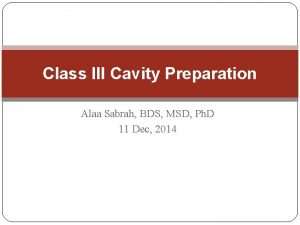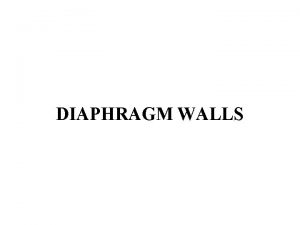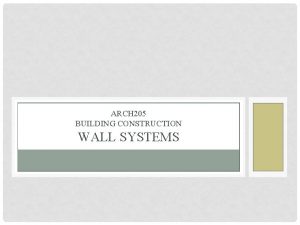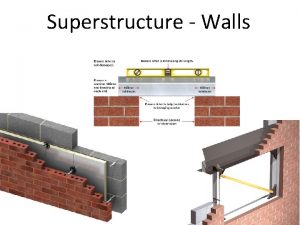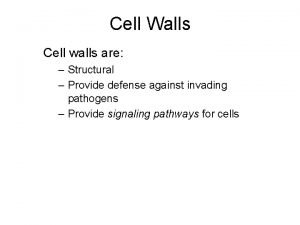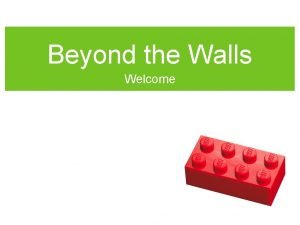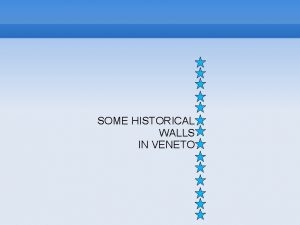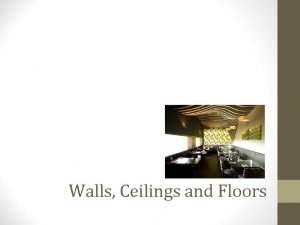Cavity walls What is a cavity wall What













- Slides: 13

Cavity walls

What is a cavity wall?

What is a cavity wall? (2) • A cavity wall is a wall that exists of two half brick skins that has been build 50 mm apart and parallel with each other. It is build to prevent moisture from penetrating the inner skin or wall. Bricks are absorptive and in wet conditions moisture can penetrate the outer wall and move against the inside of the wall to the damp prove coarse. The damp proving is placed at an angle so that the penetrating water will drop to the bottom of the wall.

Cavity walls (3)

Cavity walls (4) • Cavity walls are constructed in coastal areas where the exposure to wet conditions are more severe and also in high rainfall regions where the outside wall has a low chance to dry properly.

Cavity walls (5) • It is very common to find that bricklaying mortar falls into the cavity and collects on wall ties, cavity tray and at the base of the cavity during the building proses. This will result in bridging of cavities leading to penetrating damp. The removal of the mortar droppings can be done through temporary openings at the bottom of the wall.

Cavity walls (6) • Wall ties are placed between the skins to prevent the walls from moving apart. When cavity walls are build in wet areas, air bricks can be used to ventilate the cavity. These air bricks are placed at the top and bottom of the walls to help dry out moisture.

Cavity walls (7)

Cavity walls (8) • At the end of the walls large bevelled and king closer bricks are used. In some instances quarter and half bats are used to end off the wall constructions. When a cavity wall is build below ground level it may be filled with a weaker concrete mixture used to build the solid walls.

Purpose of a cavity wall Cavity walls are built for the following reasons: • To prevent penetration of water through the outer wall, • To isolate sound, • To isolate temperature, and • When built below ground level, to divert the mass of the building to the foundation.

Advantages of cavity walls • It prevents water from penetrating the outer wall and wetting the inner wall. • It keeps the building warm in the winter and cold and the summer. • The inner walls can be built from cheaper materials. • It has a better sound isolation than solid walls.

Disadvantages of cavity walls • These walls are more expensive to construct than solid walls • They require vertical damp prove coarser layers at all open spaces • They require a high standard of workmanship • They require good supervision over the craftsman constructing the wall

Question Time ?
 Dorsal cavity diagram
Dorsal cavity diagram I build walls poem
I build walls poem Sound walls vs word walls
Sound walls vs word walls Bevel in class 3 composite
Bevel in class 3 composite Beveled conventional class 3
Beveled conventional class 3 What is isthmus in cavity preparation
What is isthmus in cavity preparation Hollow ground bevel in dentistry
Hollow ground bevel in dentistry Secondary retention and resistance form
Secondary retention and resistance form Dorsal cavity
Dorsal cavity Thoracic cavity and abdominal cavity
Thoracic cavity and abdominal cavity Peritoneal.cavity
Peritoneal.cavity Peritoneal cavity definition
Peritoneal cavity definition Advantages of cavity wall
Advantages of cavity wall One brick t junction in english bond
One brick t junction in english bond




